2024 Fellows
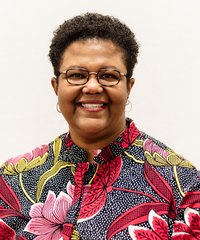
NICOLE COOKE, PhD
Professor and Augusta Baker Endowed Chair, The School of Information Science, The College of Information and Communication, The University of South Carolina
PROJECT TITLE: “Charlemae Hill Rollins, An Early Advocate for Diverse Books"
SUMMARY: My goal for this project is to research the life, career, and advocacy work of Charlemae Hill Rollins. Mrs. Rollins is among the incredible and often unsung forerunners in Black librarianship. She was Augusta Baker’s contemporary, colleague, and friend, who worked at the Chicago Public Library (CPL) for over 30 years, and they both served and loved Black children as public librarians, storytellers, and children’s literature crusaders. They were some of my profession’s earliest social justice advocates for anti-racism and diversity in children’s literature. Baker wrote "The Black Experience In Children's Books" and "Books about Negro Life for Children". Rollins wrote "We Build Together: A Reader's Guide to Negro Life" and "Literature for Elementary and High School Use," along with several other titles related to Black history. Their bibliographic publications highlighted books that positively represented Black children in literature, an early demonstration of the now popular hashtag #RepresentationMatters! I am fortunate to have access to Mrs. Baker’s archives at the University of South Carolina, and my fervent goal is to conduct a comparable study on Mrs. Rollins by working with her papers and ephemera at the Chicago Public Library and the DuSable Museum.
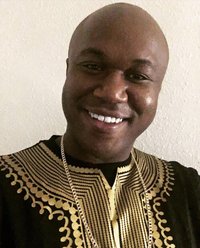
KAM COPELAND, PhD
Postdoctoral Fellow, James Weldon Johnson Institute for the Study of Race and Difference, Emory University
PROJECT TITLE: “Muhammad Gazes: Islam, Blackness and Resistance Cinema in the United States"
SUMMARY: This project is a representational history of U.S. Black American Muslims in cinema from 1959 to the present. It also explores how Black Muslims developed alternative gazes and liberatory cinematic practices by using accessible forms of film technology--such as public access television, public affairs television, home video, and independent film--to resist dominant representations of Black Muslimness in the mainstream U.S. media. Methodologically, this project employs a critical cultural studies framework that involves reading cinematic texts within a historical context that incorporates the production, political economy, and audience reception. This project is steeped in the histories of African American media production, religion, and activism.
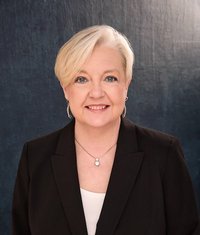
KAREN COX
Professor Emerita, Department of History, University of North Carolina Charlotte
PROJECT TITLE: "The World of Walter Barnes: Jazz, Journalism, and the Cultural Geography of Bronzeville"
SUMMARY: My research recovers the story of one of Chicago’s leading jazz journeymen, Walter Barnes. His story stands as a symbol of migration and success, of life in Bronzeville, of hard work and hustle. His impact on the South Side and Bronzeville was significant. When his Royal Creolians played at the Savoy, 5,000 people came to dance to the music. His weekly music columns in the Chicago Defender reached a broad and national Black audience. And yet, his life has been erased from the more extensive histories of jazz and Chicago. There is a reason that 15,000 people attended Barnes’s funeral following his death at the Rhythm Club in Natchez, MS, on April 23, 1940. He was important to them and their community. My project seeks to rectify this historical erasure and, in doing so, expand our understanding of the Black experience in Chicagoland.
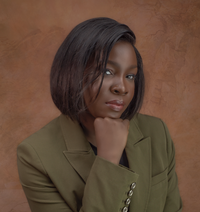
OLABANKE GORIOLA
Ph.D Candidate, Performance Studies, Northwestern University
PROJECT TITLE: "Danc(ing) the Archive: Colorism and Dark-skinned Female Dancers Representation in the Chicago Archives"
SUMMARY: Colorism as a concept was coined and first used by Alice Walker in her 1982 book "In Search of Our mothers Gardens" to describe the unconscious hostility that exists between light-skinned and dark-skinned black women within the African-American community. She defines colorism as "the prejudicial and preferential treatment of same-race people based solely on their color." Colorism frequently intersects with gender, disproportionately affecting dark-skinned women as it is intrinsically linked to beauty standards. Academic research on colorism has revealed how the intertwined nature of skin tone, gender, and beauty standards influence social status, privilege, and everyday opportunities within society for dark-skinned women of color. In this archival research, which is a fragment and the introductory chapter of my PhD dissertation on "Colorism in Nigeria", I seek to excavate the perpetuation of colorism and the experiences and representation of dark-skinned female dancers in the U.S. My work will examine the dynamics of colorism and analyze the implicit and explicit sacrifices dark-skinned female dancers offer to comply with the industry standards to attain belonging. Also, It will investigate the various ways dark-skinned female dancers created radical strategies to combat this prejudice and create a voice and an alternative space for themselves. This summer research endeavor will generate new perspectives and contribute to the knowledge of the effect of colorism on dark-skinned female dancers in the United States.
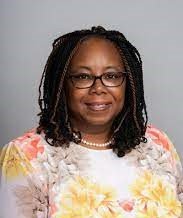
LAVERNE GRAY, PhD, Assistant Professor, School of Information Studies, Syracuse University
PROJECT TITLE: "Bright Young Things: Chicago’s New Negro Intercollegiate Club and the Wonder Books"
SUMMARY: In October of 1927, a collective of Black college students attending various institutions of higher education in the city of Chicago published a significant text on the Black presence. The group, incorporated as the Washington Intercollegiate Club under the auspices of the Wabash Avenue YMCA, set out to capture the magnificence of Black life and history in the city of Chicago. This ambitious project culminated in the creation of the comprehensive work aptly titled "1927 Intercollegian Wonder Book or The Negro in Chicago, 1779-1927. Volume I.: Survey of the Negro’s Educational, Athletic, Civic and Commercial Life from 1779 to 1927."The students who created the content attended and were recent graduates of higher education institutions, including Northwestern University, the University of Chicago, Medical Schools, and Teachers Colleges. The project examines the book, content development, the students who created it, and the use of the book as a tool for research in various disciplines. This project is a significant endeavor that aims to enrich our understanding of African American history in Chicago. The meticulous analysis of unique archival materials promises to reveal new insights and narratives, contributing profoundly to the academic and public discourse.
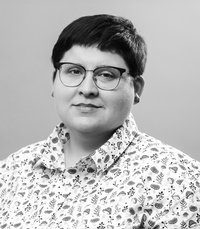
DEBRA HARDY, Ph.D, University of Wisconsin-Milwaukee
PROJECT TITLE: "Illuminating the Expanse of Bronzeville’s Black Artist-Educator Networks, 1930’s-1960’s"
SUMMARY: This project focuses on exploring and solidifying the ways that Black artists in Bronzeville used both formal networks, such as education, and informal friendship and mentor networks to gain support and grow the Black artist community. With a particular focus on artist-educator mentors such as Margaret Burroughs (1915-2010), Charles White (1918-1979), and Eldzier Cortor (1916-2015), my project aims to demonstrate the importance of both formal and informal artist communities in supporting Black arts during the Chicago Renaissance, and the ways that artist-educators who benefited from these networks continued to support and mentor students in future generations.

MASAYOSHI "MASA" YAMADA, Ph.D Candidate, Department of History, University of California Los Angeles,
PROJECT TITLE: "The Cry of Jazz (1959) as a Historical Record of Post-World War II Chicago"
SUMMARY: First released in 1959, The Cry of Jazz is a thirty-four-minute independent film that depicts a meeting of a fictional, interracial jazz appreciation club. Drawing an analogy between jazz's music structure and African Americans' life in American society, the film provocatively anticipates the death of jazz. The Cry of Jazz was the only work of KHTB Productions, a movie production company created by a group of African Americans in Chicago: novelist Mark Kennedy, urban planner Nelam L. Hill, mathematician Eugene Titus, Jr., and composer Edward O. Bland. The film never achieved commercial success. On the contrary, for its technical deficiency and politically charged content, The Cry of Jazz was disparaged by critics and the public as, in the words of Bland, “the work of a madman” upon its initial release. The film baffles viewers even today, mainly for its unusual juxtaposition of the term “Negro” and heightened racial politics. It is considered, at best, a remarkable work of cultural politics ahead of its time and, at worst, a historical aberration from otherwise racially harmonious sentiments espoused during the civil rights years. My research shows that neither is the case. Situating its production within the historical context of post-World War II, Chicago reveals that The Cry of Jazz was a product and a critique of an interracial cultural scene that flourished ephemerally in the neighborhood of Hyde Park during the 1950s. As I am turning my dissertation into a book, I intend to recount a fuller story of the making of The Cry of Jazz as a historical narrative of the Black experience in post-World War II Chicago.
__________________________________________________________________________________________